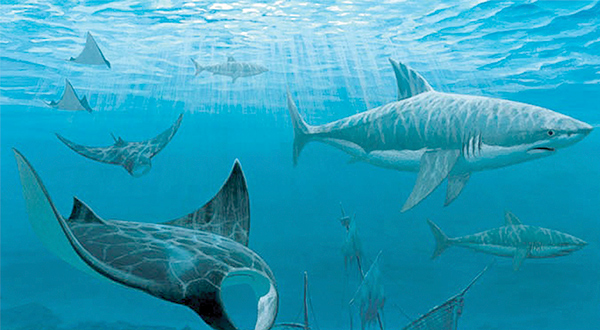First data tool kit on sharks and rays
Published on: Friday, May 17, 2019
By: []

KUALA LUMPUR: WWF and the Centre for Sustainable Tropical Fisheries & Aquaculture (CSTFA) at James Cook University have developed the first toolkit that provides a variety of ways to collect scientific data on sharks and rays to help conserve and manage these species, many of which are threatened.
Sharks and rays are in a deepening crisis, with a quarter of all species threatened with extinction and many in significant decline, mostly due to overfishing. Exacerbating the situation is that nearly half of the species lack sufficient data to assess their conservation status.
ADVERTISEMENT
The Rapid Assessment Toolkit for Sharks and Rays (the Toolkit) is aimed primarily at countries with insufficient species-specific data to allow science-based management. Such nations may have limited capacity and resources to gather data that could help them accurately determine the true state of their coastal environment, a situation common among marine-based communities. This includes Malaysia, where the Government recognises there is insufficient species-specific data to generate comprehensive information on aspects of biology, taxonomy, population status, habitat, trade, and socio-economy.
Dr Henry Chan, Conservation Director of WWF-Malaysia said, “We encourage the various institutions in Malaysia to utilise this toolkit to contribute and help improve data deficient areas on sharks and rays. This is in line with the priorities identified in the Malaysia National Plan of Action for sharks (NPOA-Shark 1, 2 and 3).”
Dr Andy Cornish, Leader of the WWF’s Sharks: Restoring the Balance initiative, noted that the deterioration of ocean health around the world has enormous implications for coastal communities in particular. “Sharks and rays perform a wide array of essential ecosystem functions, which means their conservation is even more urgent. The more we know about the status of shark and ray populations, the more we can focus conservation efforts where they are most needed,” he said.
The Toolkit consists of practical and simple step-by-step guidelines for collecting data by using six tools or methods contained in a 70-page manual. Appropriate tools can be selected depending on the knowledge gap of the particular waters where it may be used. They consist of how-to guidance in the areas of: taxonomy, genetics, creel and market surveys, baited remote underwater video systems (commonly known as BRUVS), tagging and tracking, and citizen science.
ADVERTISEMENT
Dr Amy Then Yee Hui, a senior lecturer at the University Malaya, is piloting the use of FTA Elute sampling cards in the genetic section of this toolkit for species identification. “I am especially fascinated with the innovative use of a simple card for tissue sampling. This approach, with testing and validation, can revolutionise science to identify sharks and rays in the field such that even an untrained person can assist with tissue collection.”
“The six tools are each broken into sections that explain why one would use a particular tool, what is the tool and detailed steps on how to use the tool,” said Dr Cassandra Rigby, a CSTFA Research Fellow and chief author of the Toolkit.
ADVERTISEMENT
“Divers, for instance, can find useful ways to contribute information in the section on Citizen Science, or field operators can learn how to take a photo of a shark so it is useful for accurate species identification.”
WWF would like to thank Disney Conservation Fund and The Shark Conservation Fund for their financial and other support to the development and outreach of this Toolkit.
Stay up-to-date by following Daily Express’s Telegram channel.
Daily Express Malaysia




